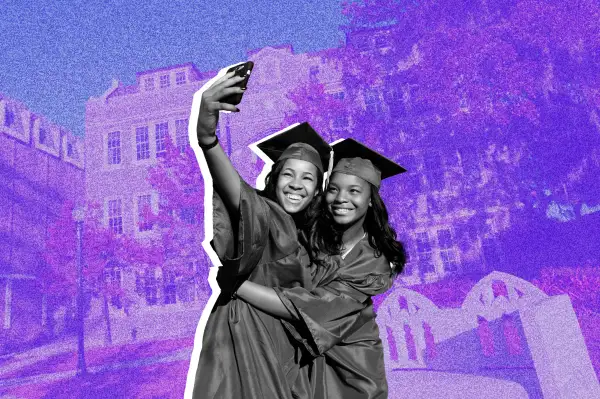Early Student Loan Forgiveness Applies to More Borrowers Than Originally Expected

Early student loan forgiveness through the Biden administration’s new income-driven repayment plan is on its way for borrowers with higher original student loan balances, too.
President Joe Biden announced Friday that his administration is implementing the forgiveness portion of Saving on a Valuable Education program, aka SAVE, nearly six months ahead of schedule. Debt cancellation now will start in February. This benefit was originally scheduled to take effect in July.
Due to mixed messaging of the roll out and complex qualifications, it was widely reported that only loan amounts of $12,000 or less would be eligible for early forgiveness, but the White House and the Department of Education confirmed to Money that higher balances are eligible for forgiveness as well.
“Borrowers with higher debt loads will also see their debts canceled starting in February if they have already met the criteria and are enrolled in SAVE,” the Education Department clarified in a statement to Money.
The department’s official rules, published to the Federal Register Tuesday, also confirm that borrowers with more than just $12,000 of debt could receive forgiveness as soon as February if they have made enough qualifying monthly payments on their loans.
Who qualifies for early SAVE forgiveness
The core requirements for student loan forgiveness through SAVE are related to how much you originally borrowed for higher education and how long you’ve been in repayment. In other words, there is no limit on the amount of debt that can be canceled so long as you meet the required years of repayment.
Here are the key qualifications:
- To receive forgiveness after as few as 10 years of repayment, you must have originally borrowed $12,000 or less.
- For each $1,000 above that amount, your repayment period increases by one year: $13,000 would take 11 years; $14,000 would take 12 years and so on.
- You must be enrolled in the SAVE repayment plan.
If you meet these criteria, the Education Department says your debt will be forgiven as early as February with no action needed. The department will also be contacting borrowers who may be eligible for forgiveness but haven’t enrolled in SAVE yet. The White House says to be on the lookout for an email titled: “You may qualify for loan forgiveness on SAVE."
So far, about 7 million people have enrolled in SAVE, according to the newest figures from the Education Department. Of those, nearly 4 million borrowers have had their monthly student loan payments set to $0.
As an income-driven repayment plan, SAVE sets monthly loan payments according to 10% your disposable income — as defined by a formula based on 250% of the federal poverty level. If you have no disposable income, your payment is zeroed out. In the meantime, each “payment” of zero counts toward your repayment history. Depending on how much you originally borrowed, you can receive forgiveness after 10 to 25 years of payments.
Undergraduate loans have a maximum repayment timeline of 20 years, while the maximum for graduate loans is 25 years. In effect, borrowers who originally took out less than $21,000 will see forgiveness faster than the 20-year timeline offered on previous income-driven repayment plans.
In July, more SAVE benefits are slated to roll out. Most notably, the formula that determines your monthly payment amount is getting more generous. When it takes effect, monthly payments in the SAVE program will be set to 5% of your disposable income, down from the current 10%.
More from Money:
What Actually Happens if You Don't Pay Your Student Loan Bills?


